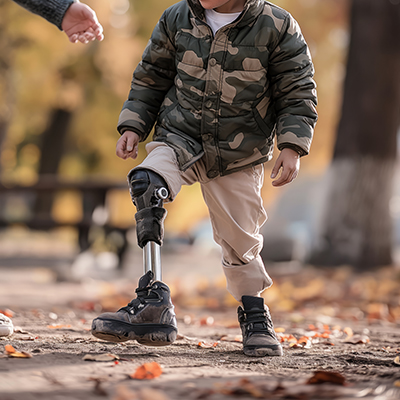Pediatrics Prosthetics & Orthotics
Pediatric prosthetics are designed to provide children with limb loss or difference with the opportunity to participate fully in activities and develop a sense of normalcy. These prosthetics are specifically tailored to meet the unique needs of children, taking into account their growth and development, as well as their emotional and psychological well-being.
Characteristics of Pediatric Prosthetics:
- Growth-friendly design: Pediatric prosthetics are designed to accommodate the child's growing body, allowing for easy adjustments as they grow.
- Lightweight and durable: Pediatric prosthetics are made with lightweight materials to ensure comfort and durability.
- Cosmetically appealing: Pediatric prosthetics can be designed to match the appearance of the natural limb, helping children feel more confident and self-assured.
- Functional features: Pediatric prosthetics often incorporate specialized features such as suction cups or straps to ensure a secure fit and prevent accidental detachment.
- Customization: Pediatric prosthetics can be customized to meet the individual child's specific needs, such as accommodating for a missing hand or foot.

Benefits of Pediatric Prosthetics:
- Increased independence: Pediatric prosthetics allow children to participate in activities and play with their peers, promoting independence and confidence.
- Improved self-esteem: A prosthetic limb can help a child feel more confident and self-assured, reducing feelings of self-consciousness.
- Enhanced mobility: Pediatric prosthetics can enable children to participate in physical activities, such as sports and dance, promoting overall physical development.
Pediatric Orthotics:
Pediatric orthotics refers to the design, fabrication, and application of devices that are specifically designed to support, align, or correct the growth and development of children's limbs and spines. These devices can be used to treat a variety of conditions, including cerebral palsy, spina bifida, clubfoot, scoliosis, and other neuromuscular disorders.
The goals of pediatric orthotics include:
- Improving mobility and function
- Relieving pain and discomfort
- Enhancing appearance and self-esteem
- Supporting growth and development
- Correcting deformities
Types of pediatric orthotics:
- Bracing: Devices that provide support and stability to joints and muscles, such as wrist splints or knee-ankle-foot orthoses (KAFOs).
- Casting: Techniques used to immobilize or correct limb alignment, such as serial casting for clubfoot correction.
- Orthopedic shoes: Custom-made shoes that provide additional support and stability for children with foot deformities.
















